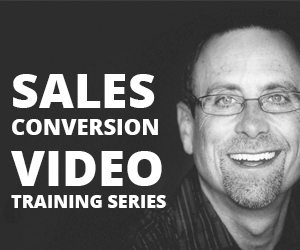Discover How Easily You Can Sell Anything

So how’s your Premium Client Acquisition going?
Are you getting the high-end clients you want and expected to have by now?
If it’s less than stellar let me remind you of a magic, little tool.
This tool is about returning to the basics.
All that stuff you learned in your MBA program.
Let’s get back to basics with…A.I.D.A.
In The Beginning…
A.I.D.A. is a handy little tool for Not-Sales people. It was invented by E. St. Elmo Lewis in 1898 as a way to remember the most important principles when talking to a prospect or client.
Lewis’ basic premise for selling was to approach the sales process like a training session. You, the salesperson, are training the prospect on your product or service. This idea is revolutionary because it takes all the pressure off of both the seller and the buyer.
It’s just a class!
Lewis had an extensive resume as the head of marketing for several companies and went on to a successful consulting career. He even worked with firms that studied and measured effectiveness in advertising. So he had some things to say.
Related Post : 3 Ways to Improve Your Market Research
Related Post : Discover How Easily You Can Create A Premium Sales Funnel
Related Post : What People Find Most Challenging About Selling Their Product
What Is A.I.D.A. ?
Looking at the selling process like a training session is brilliant. Just let it sink in for a moment…
When you approach a prospect, either in person or online, you’re basically meeting them to show them how something works. Done! That’s it!
“Hey I have this cool thing! Let me show you how it works!”
No pressure, no gimmicks. No hard sell. No expectations.
So what is it?
A.I.D.A. stands for Attention, Interest, Desire, Action. It’s designed to help you remember the points to hit during your training session.
And it goes a little something like this…
Attract their ATTENTION
Maintain their INTEREST
Create DESIRE
Prompt them to take ACTION
Attract Attention
You gotta get the person’s attention. Whatever the medium: a beautiful magazine layout; an unassuming question; a sensational headline; even the dreaded clickbait, if done right these are attention-grabbers and can start a conversation. That’s what you want. Just to start the conversation.
Maintain Interest
Next, you need to maintain that attention and keep their interest. This is where you begin your “training.” Once you have their attention they’re waiting to hear more. Tell them a story about your product. Show them a case study. Tell them the backstory of how the product or service came to be.
This is where you get vulnerable and open up with your own personal experience or that of someone else who has used or benefited from the product or service.
Create Desire
Becoming vulnerable will allow your prospect to begin to know, like and trust you. And this know-like-trust process is what assists in creating desire.
You’ve piqued their interest in your product. Then you maintained that interest by allowing them to get to know you or your product a little better through stories, testimonials and case studies.
Once you’ve established their interest in you and your product, and you’re speaking to your target market, the next natural step in the process is desire.
You’ve now created desire in your prospect.
Take Action
Once desire has been created that’s when it’s time to prompt them to take action. This is where the CTA, sales page and/or credit card happen. You encourage them to buy the product.
This process can take as little as a few minutes or as long as a few days or weeks depending the size of the purchase. I consult with premium clients. When someone is interested in working with me the process of discovery can take several weeks and stretch over 4 or 5 meetings.
Having 4 or 5 meetings with someone who’s going to spend $100,000 on you is logical. But I still have to attract their attention, maintain their interest, continue to create desire and prompt them to take action when they’re ready.
I still have to do all those steps. And I have to do them over and over again.
It’s Still Relevant
Even though A.I.D.A. has been around now for 121 years it’s just as relevant and still used. Why? Because it’s simple and true. A.I.D.A. is not a hard sell or manipulative technique. It’s a straightforward way for non-marketing people to remember and understand how to orchestrate a successful sale.
Everybody’s got something to sell.
Whether you’re a kid trying to sell your mom on a no-homework-pizza-night situation or you’re a young clothing designer trying to sell her first piece of clothing on Instagram.
Not everyone’s a born salesperson. But that’s ok. You don’t have to be a smooth-talking salesy salesman to sell. You simply have to:
- Know your market
- Have a great product
- Love that product yourself
- Establish trust in your prospect
- Engage them
- Prompt them to buy
Easy. Well it’s not always easy but it’s simple. And A.I.D.A. helps you remember to keep it simple. Don’t over complicate. You are simply introducing yourself and your product to someone and then training them about your product.
Bring Your Ideal Customer to Life & Break Through to Them With Your Marketing, DRIVE Your Sales, and Motivate Them To Join Your HIGH END Programs.
The Fifth Element
The problem is the “prompting them to buy” part.
If one person doesn’t buy what you’re selling, ok. No harm, no foul. Move on.
If 100 people aren’t buying what you’re selling, um ok, Houston…
You have to find the chink in the armor. There is always one specific place to start looking if you’re not selling.
But it’s good to analyze the whole chain.
First question:
Are you targeting the right market? Are you speaking to your ideal customer?
Then…
Do you have a great product? Are there problems with it? What kind of feedback have you gotten in your beta testing?
Do you love the product yourself? Are you just, “meh” about it?
Have you established trust with your prospect? (now we’re getting warmer)
Have you engaged them and prompted them to buy at the right moment?
These are all good questions but there is one question that is the most important one of all. And addressing it is essential to your success.

CONFIDENCE.
Your prospect must have confidence in you and your product. This is the one element that the A.I.D.A. formula leaves out. You need to establish that trust and confidence in your prospect before they’ll buy.
How do you do that?
I have found that the simplest way to do that is to approach them with authenticity. That’s why telling a story is so compelling. If you tell your story and come from your heart, very often that alone can establish trust.
Other ways to establish trust in your prospect is to rely on referrals, use case studies, offer guarantees and talk to them like they’re people. I know, I know. That last one is as sensational as it sounds.
Well, believe it or not, we forget. By the time we get to the point where we’re actually talking to the customer we may have forgotten that the customer is a person.
After figuring out your target market, who your avatar is, doing your market research, product testing, building sales pages, figuring out CTAs, etc. actually talking to a person sounds downright old fashioned.
And yet, that’s what it always comes back to.
Let me prove it.
Chances are you’ve had an issue with a product or service in the last 6 months. You went back to the website. You lodged a complaint. You filled out a form email. You eloquently and strongly worded your complaint. And then you sat by your computer waiting for a response.
And what did you get?
Hi! Thank you so much for contacting us! One of our team members will get back to you within 24 hours!!!!
drum, drum, drumming your fingers on your desk waiting for the second email.
This is already atrocious, is it not?
Now this problem may or may not go on to get resolved. But this initial process is already frustrating for the consumer. First, there was a problem with the product. Then they had to wait to get it addressed!
If the problem does get resolved through emails, great! But it still took real, human interaction to get it resolved.
If the problem didn’t get resolved you were probably emailing with a bot.
In the age of technology big companies are trying to figure out how to have less contact with consumers. But you know what they have found?
They need more contact at the critical moment of a customer losing confidence, not less.
When Companies like Amazon and Zappos were getting rolling you couldn’t find a phone number on those sites to save your life. Now, however sneakily hidden, a phone number is still a company’s best tool for reestablishing confidence.
And speaking directly to your customer isn’t just for problems. It’s still a great way to establish initial trust and confidence in your product.
So while A.I.D.A. is a great tool to remember the simple elements of a sale we need the fifth element to make it stick. Yes my friends, confidence is a stick strategy.
Related Post : 3 Ways to Improve Your Market Research
Related Post : Discover How Easily You Can Create A Premium Sales Funnel
Related Post : What People Find Most Challenging About Selling Their Product

The Wrap Up
A.I.D.A. is a magical little tool to help you remember the basics. And the art of turning a sale into a training course for your product really takes the pressure off of you and your prospect.
Just don’t forget the secret sauce…confidence. Instill confidence and trust in your prospect and create a lifelong relationship.
- Know your market
- Have a great product
- Love that product yourself
- Establish trust in your prospect
- Engage them
- Prompt them to buy
Simple! Not always easy. Whether you’re selling t-shirts on Etsy, a trip to Disneyland to your parents, or Teslas on Twitter you’ve got to have the basics down. And A.I.D.A. just helps you remember the basics. Namely, you’re just talking to people.
Go talk to some people.
So how well do you know your market? Are you selling cheeseburgers to vegetarians?
Grab my Ultimate Customer Avatar Worksheet here. All you have to do is plug in the info to start understanding exactly who your ideal customer is and start selling more!
Are you selling t-shirts on Etsy?
Are you a young entrepreneur just starting out?
Have you used the A.I.D.A. principles in your business?
How’s it working out?
Let me know below! Join the conversation>>













